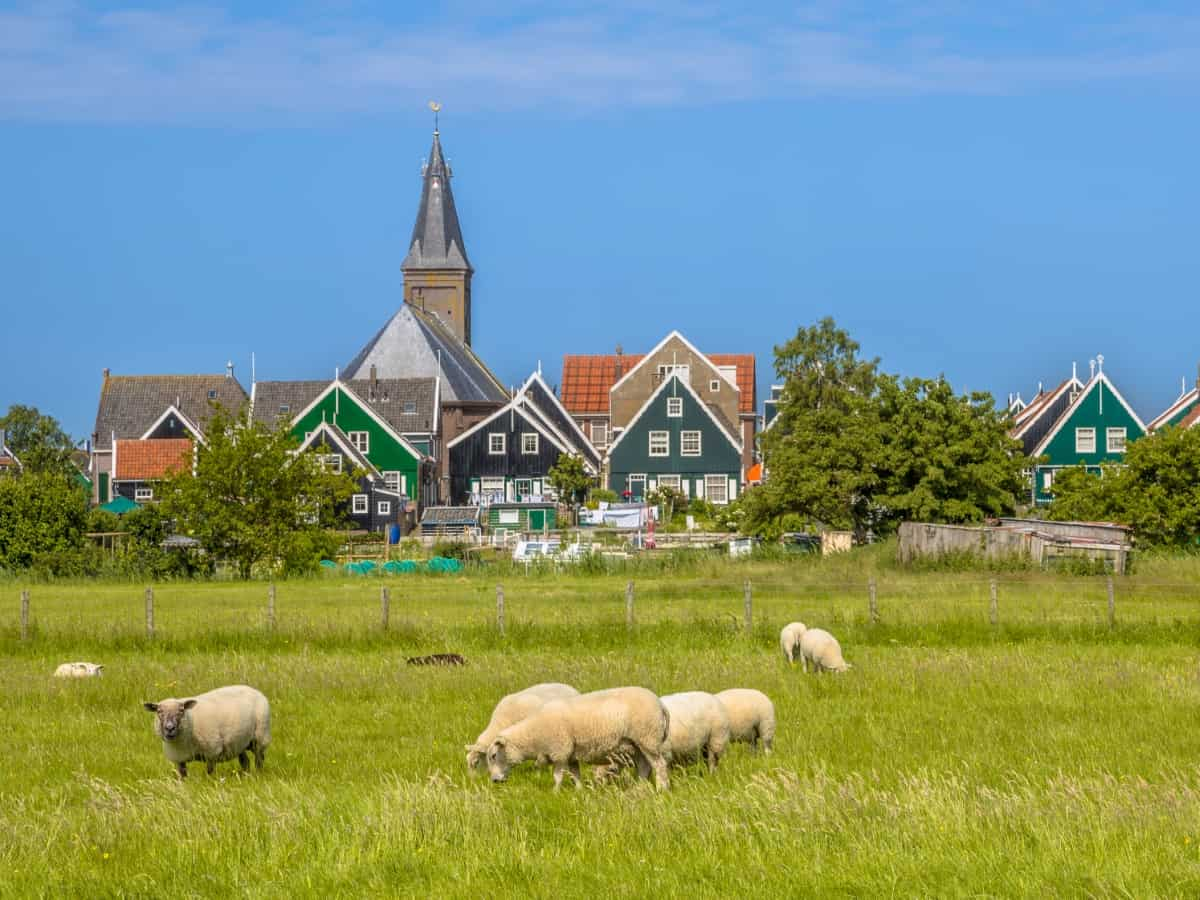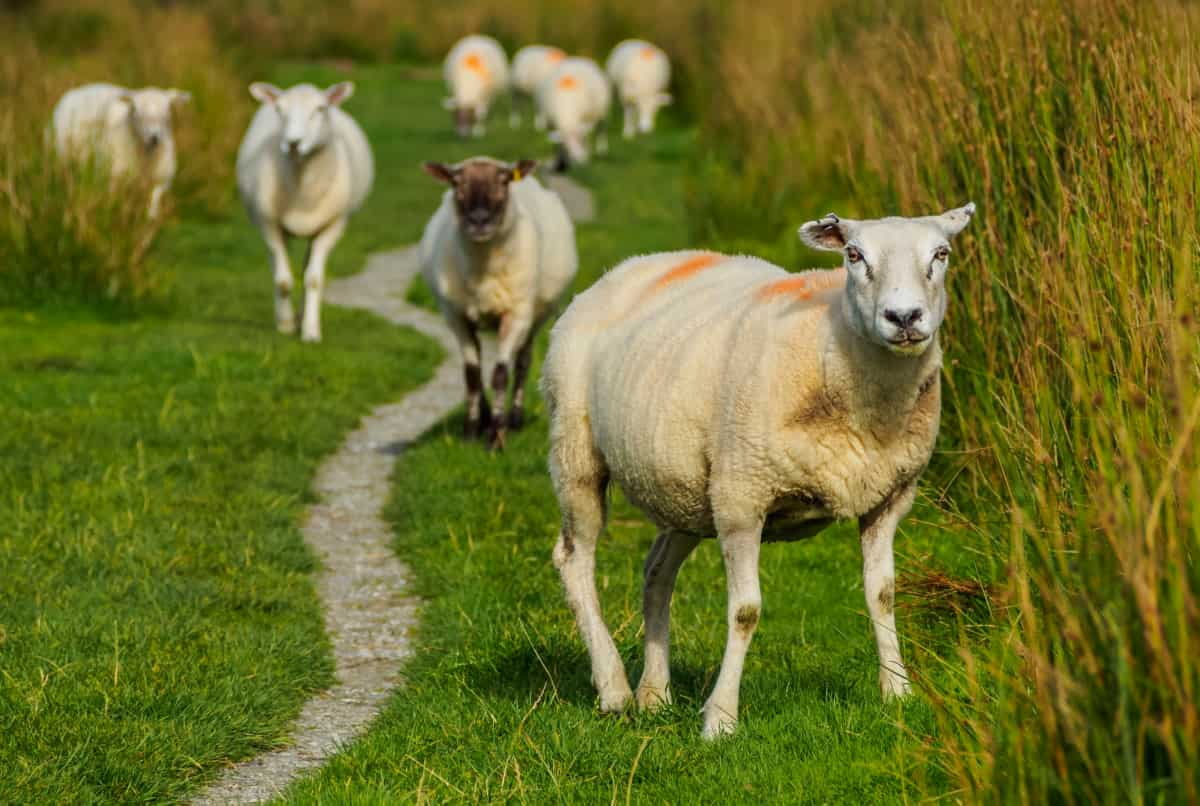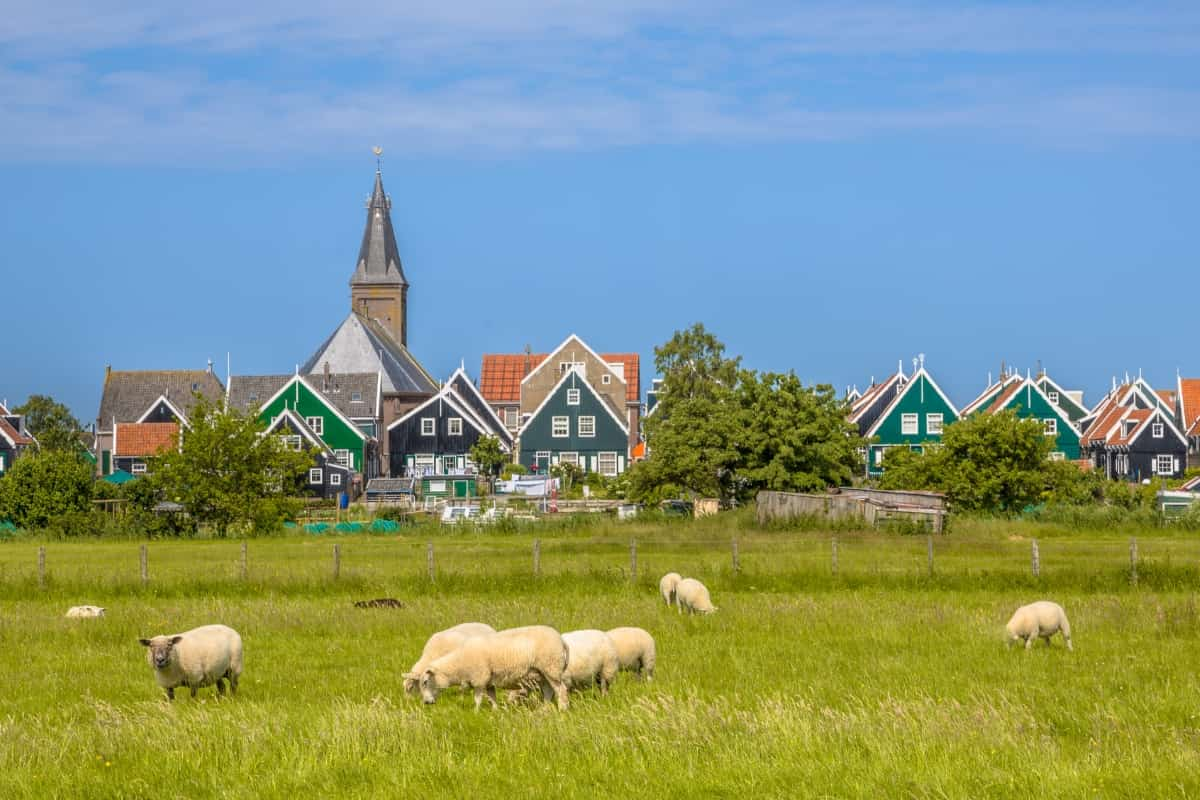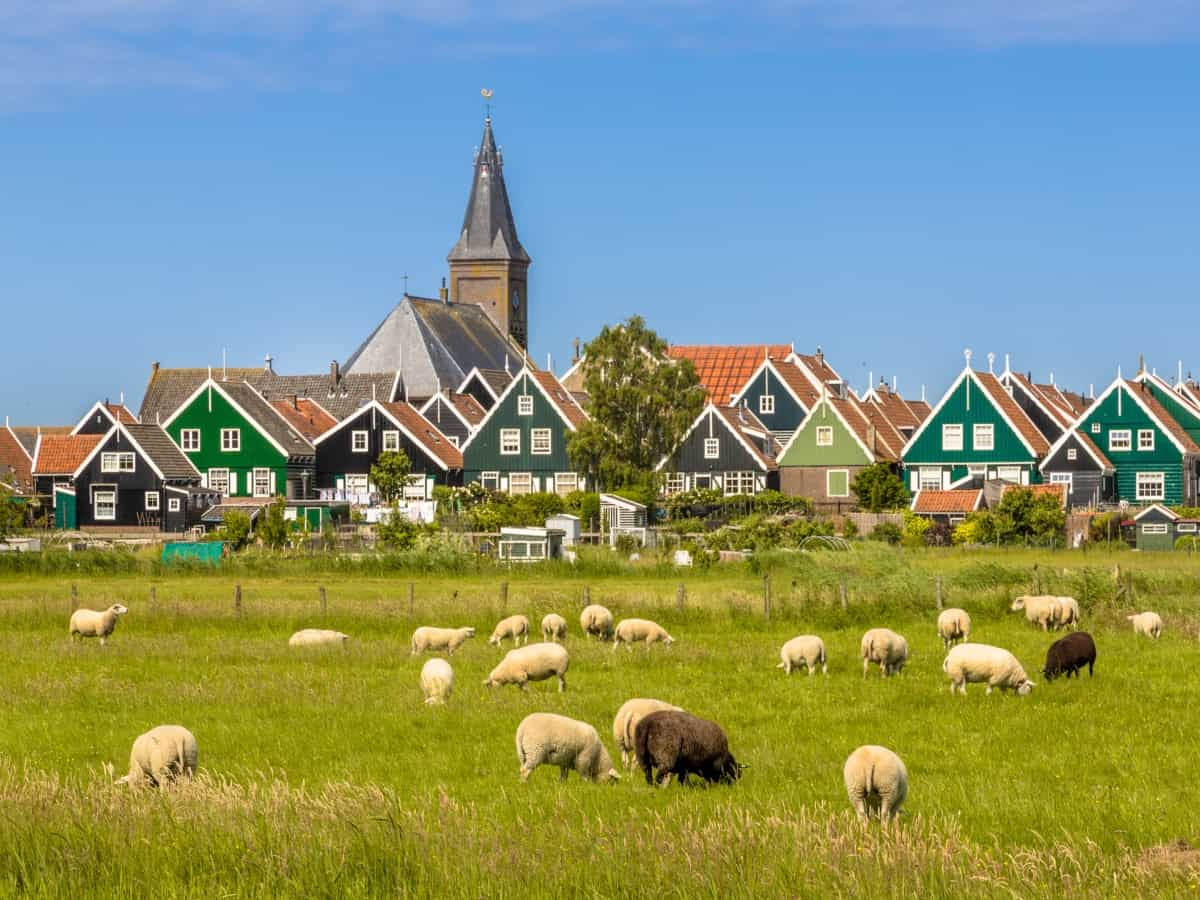Beltex sheep breed is a unique and valuable breed prized for their muscular build, high meat yield, and distinctive appearance. Originating from Belgium, they have gained international recognition and are widely utilized in meat production and crossbreeding programs aimed at improving meat quality in sheep farming operations. Here’s the guide to the Beltex sheep breed, covering their characteristics, origin, facts, and uses.

All You Need to Know About Beltex Sheep Breed
The Origin and History of Beltex Sheep
Beltex sheep breed originated in Belgium in the 1980s by crossing Texel and Belgian breeds to create a meatier, more muscular sheep suitable for market demands. Developed by breeders looking to enhance carcass quality, Beltex quickly gained popularity for its superior meat yield and conformation.
Its distinct appearance, characterized by a solid, compact build and well-defined muscling, garnered attention in the sheep industry. Beltex genetics spread internationally, with the breed becoming prized for its efficiency in meat production. Today, Beltex sheep are valued for their robustness, high growth rates, and ability to produce quality meat, making them a sought-after breed worldwide.
Beltex Sheep Characteristics
- Origin: Beltex sheep originated in Belgium in the early 20th century through crossbreeding efforts to improve meat quality.
- Appearance: Compact and muscular, with a distinctive short and square build. The head is clean and devoid of wool.
- Coat: Short, dense, and fine wool, which contributes to a clean and marketable carcass.
- Meat Quality: Known for exceptional meat quality, featuring a high muscle-to-bone ratio and fine-grained, tender meat.
- Weight: Adult Beltex sheep are medium to large-sized, with rams weighing between 90 to 110 kg and ewes between 70 to 90 kg.
- Fertility: Generally, Beltex sheep are known for good fertility rates, with ewes having the potential for multiple lambings in a year.
Maximizing Meat Production with Beltex Sheep
To maximize meat production with Beltex sheep, focus on selective breeding for traits like muscle mass, fast growth rates, and efficient feed conversion. Implement a rigorous management system to ensure optimal nutrition, health, and welfare standards. Utilize modern technology such as genomics and data analytics to identify superior breeding stock and make informed breeding decisions.
Employ rotational grazing and pasture management practices to maximize forage utilization and minimize feed costs. Regular monitoring of growth performance and health parameters is essential for early detection and intervention. Collaborate with veterinarians, nutritionists, and other experts to fine-tune production strategies and mitigate potential challenges.
Beltex Wool Production: Characteristics and Uses in Textiles
Beltex sheep wool is renowned for its exceptional quality, characterized by its fine texture, softness, and durability. Its fibers are typically uniform in diameter, contributing to the wool’s luxurious feel and excellent insulating properties. In textiles, Beltex wool is highly sought after for its ability to provide warmth without bulk, making it ideal for crafting high-end garments, such as sweaters, scarves, and blankets.
Its natural resilience also lends itself well to upholstery and carpeting, where durability is essential. Additionally, Beltex wool is prized by artisans for its ease of dyeing, allowing for a wide range of vibrant colors in finished products. Overall, its superior quality makes it a favored choice for premium textile applications.
Health and Disease Management in Beltex Sheep
Health and disease management in Beltex sheep involves a multifaceted approach aimed at maintaining optimal well-being and preventing illness. This includes regular veterinary check-ups, vaccinations against common diseases like foot rot and clostridial diseases, and proper nutrition tailored to their specific needs. Good hygiene practices, such as clean housing and regular cleaning of feeding and watering equipment, help minimize the risk of infections.
In case you missed it: Blackhead Persian Sheep: Characteristics, Origin, Uses, Breeding, Lifespan, Price, and Size

Early identification and treatment of health issues, such as parasite infestations or respiratory infections, are crucial. Additionally, providing adequate shelter and protection from extreme weather conditions, along with monitoring for signs of stress or discomfort, contributes to overall health and welfare. Regular monitoring and adaptation of management practices contribute to maintaining the health and productivity of Beltex sheep.
Beltex Sheep Breeding Techniques
Breeders focus on enhancing traits like loin depth, muscle density, and overall body shape to produce lambs with high meat yields and desirable carcass characteristics. Techniques include careful pairing of rams and ewes based on genetic potential, utilizing performance records to track traits of interest, and employing modern reproductive technologies like artificial insemination and embryo transfer to accelerate genetic progress.
Also, nutrition management plays a crucial role in supporting optimal growth and development. Through these methods, Beltex breeders aim to continuously improve the breed’s suitability for meat production continuously, ensuring consistent quality and profitability in the industry.
Feeding and Nutrition Plans
Feeding and nutrition plans for Beltex sheep require careful consideration to meet their dietary needs. Generally, a mature Beltex sheep requires around 2-3% of its body weight in feed per day, divided into two meals. For example, a 150-pound sheep would need 3-4.5 pounds of feed daily, split into two feedings.
The feed should consist of high-quality forage, such as grass hay or alfalfa, supplemented with grains like corn, barley, and oats. Also, a mineral supplement should be provided to ensure proper health and growth. Offering fresh water at all times is crucial for hydration and digestion. Monitoring body condition and adjusting the feeding regimen accordingly is essential to maintain optimal health and performance in Beltex sheep.
Behavior and Temperament of Beltex Sheep
Beltex sheep are known for their robust and lively temperament. They exhibit a curious and alert nature, often displaying high levels of energy and intelligence. Their behavior is characterized by a strong flocking instinct, making them highly social animals that thrive in group settings.
Despite their smaller size compared to some other sheep breeds, the Beltex sheep breed is confident and assertive, showing resilience and adaptability in various environments. They tend to be relatively docile and easily handled by experienced shepherds, but their spirited demeanor may require firm and consistent handling. Overall, Beltex sheep are prized not only for their muscular build and meat quality but also for their engaging personality and active disposition within the flock.
Market Trends and Demand for Beltex Sheep Products
Beltex sheep products are experiencing a surge in demand due to their desirable meat characteristics, including tenderness and flavor. As consumers increasingly prioritize quality and sustainability, Beltex sheep, renowned for their high meat-to-bone ratio, are gaining popularity among discerning buyers. The breed’s ability to thrive in various climates and terrains adds to its appeal for farmers seeking resilient livestock options.
In case you missed it: Ouessant Sheep Breed: Origin, Characteristics, Uses, Weight, Size, Lifespan, and Price

Moreover, the versatility of Beltex products, ranging from premium cuts to processed meats, caters to diverse culinary preferences, further driving market growth. With a growing focus on premium, ethically sourced proteins, the Beltex sheep breed is poised to continue its upward trajectory in the agricultural industry, meeting the evolving demands of producers and consumers.
Beltex Sheep Price and Lifespan
Beltex sheep, known for their muscular build and excellent meat quality, generally fetch a premium price in markets due to their desirable characteristics for meat production. Prices for Beltex sheep can vary depending on factors such as age, gender, market demand, and individual quality. Typically, Beltex lambs command higher prices than older animals due to their tenderness and flavor. On average, Beltex sheep price ranges between $750-800.
Lifespan-wise, Beltex sheep lifespan is around 10 to 12 years with proper care and management. However, their primary contribution to the market is usually in their earlier years when they are raised for meat production. Efficient breeding practices and attentive husbandry can maximize the profitability and longevity of Beltex sheep within farming operations.
In case you missed it: The Sheep Fattening Process Methods, Feed Formula, and Cost

Conclusion
If you are considering raising Beltex sheep, it’s advisable to consult with local breeders and agricultural extension services for information specific to your area. As with any livestock breed, the specific characteristics of individual animals can vary. Local management practices, environmental conditions, and breeding goals may also influence the traits of Beltex sheep in different regions.
- Feed Your Flock for Less: Top 10 Tips to Save on Chicken Feed
- Ultimate Guide to Ossabaw Island Hog: Breeding, Raising, Diet, and Care
- Hatching Answers: The Top 10 Reasons Your Chickens Aren’t Laying Eggs
- Eggs and Economics: Breaking Down the Cost of Raising Backyard Chickens
- Defend Your Greens: Proven Methods to Keep Iguanas Out of Your Garden
- Ultimate Guide to Cinnamon Queen Chicken: A Comprehensive Guide for Beginners
- Ultimate Guide to California Tan Chicken: Breeding, Raising, Diet, Egg-Production and Care
- Ultimate Guide to Marsh Daisy Chicken: Breeding, Raising, Diet, and Care
- 10 Types of Chicken Farming Businesses You Can Start for Profits